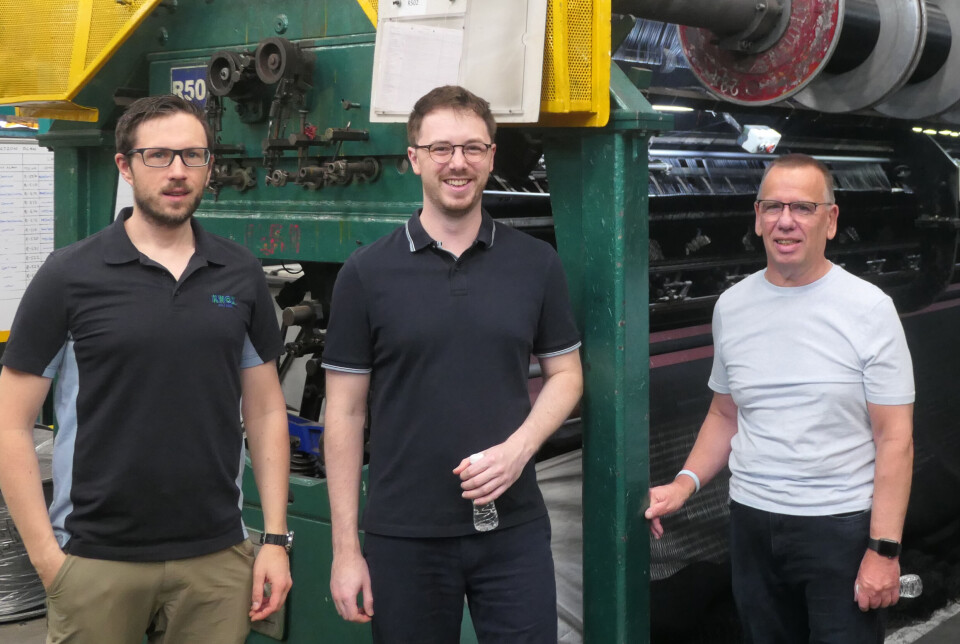
Looking back, thinking ahead: Finlay Oman
Fish Farming Expert has asked individuals connected to the salmon farming industry about their year, and what they hope for in 2024. Today we feature Finlay Oman, managing director of Ayrshire net supplier W&J Knox.
What have been the highlights for you professionally in 2023?
We were joined by customers and friends at the end of February to say farewell to retiring managing director Dave Hutchens after a career spanning 40 years in the salmon and trout industry.
Garware’s Seal Pro netting
range has been revolutionary in combating predatory pressures, but one of the
downsides was the hydrophobic nature of the yarns, which did not lend itself to
antifouling. Some of our customers have expressed a desire to move away from
net washing at sea. Garware’s R&D team developed a coatable version of Seal
Pro that was pioneered on two sites in Scotland during the year, with a
reasonable level of success.
Our technical manager Ryan
Ganfield was nominated for two awards for his tireless pursuit of opening
recycling routes for end-of-life nets.
Following extensive
development work on the ‘glider system’, a full-scale trial was conducted on a
high energy site during the winter of 2022-23 (editor’s note: the system provides
improved operational tension of fish pen nets as well as ease of lifting). The
results were positive, and we have been working with Mowi Scotland to set up
sites with new systems and converting existing infrastructure to provide
compatibility.
We had an extremely positive experience at Aqua Nor as part of the Selstad Group for the first time. This provided the opportunity to demonstrate some of the exciting new products that we have been developing alongside Selstad’s technical team
We had an extremely positive experience
at Aqua Nor as part of the Selstad Group for the first time. This provided the
opportunity to demonstrate some of the exciting new products that we have been
developing alongside Selstad’s technical team as well as the ‘game changing’ Aqua-Lock
invented and patented by Fjord Solutions, now collaborating with Selstad. The
glider system along with the Aqua-Lock is being viewed by some as the dream
combination, providing a safer and speedier net lifting option. One of Knox’s
customers described the Aqua-Lock as ‘the most outstanding & impressive new
product at the event’.
As always, visiting Garware Technical Fibres (Knox’s manufacturing supply partner in India) highlights many of the new ideas and developments from their dedicated R&D team. This is always a great forum for the Knox and Garware guys to discuss design ideas and issues face to face.
As a company we took the
decision to ensure that nobody on the factory floor was earning less than the
real living wage.
What will be the most
significant challenges and opportunities for your company in the coming year?
Dealing with end-of-life nets
on an industrial scale, with the emphasis being on recycling.
Further upscaling of our net
repair bays to handle larger nets.
Increased mechanisation of
net handling within the factory to minimise the potential of industrial
injuries.
Environmental conditions on new
farming sites will challenge the physical properties of the products that we
supply and service.
We have strengthened the
technical team over the last 18 months, and they are continuing to focus on
recyclability in collaboration with Garware Technical Fibres along with
durability.
What do you see as the most significant challenges for the salmonid farming
industry in Scotland and globally in 2024?
Gill health issues
exacerbated by mechanical washing of nets at sea and rising seawater
temperatures.
Fuel and feed costs remain
volatile, with energy providers continuing to profiteer. This will affect all
aspects of the industry and its supply chain.
A lack of affordable housing in the population centres close to the main farming areas will discourage families from establishing themselves close to where the industry has a demand for staff.






















































